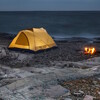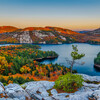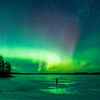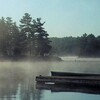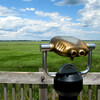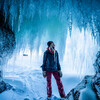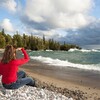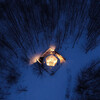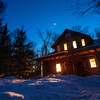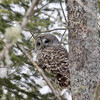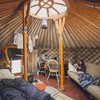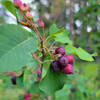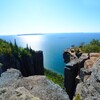
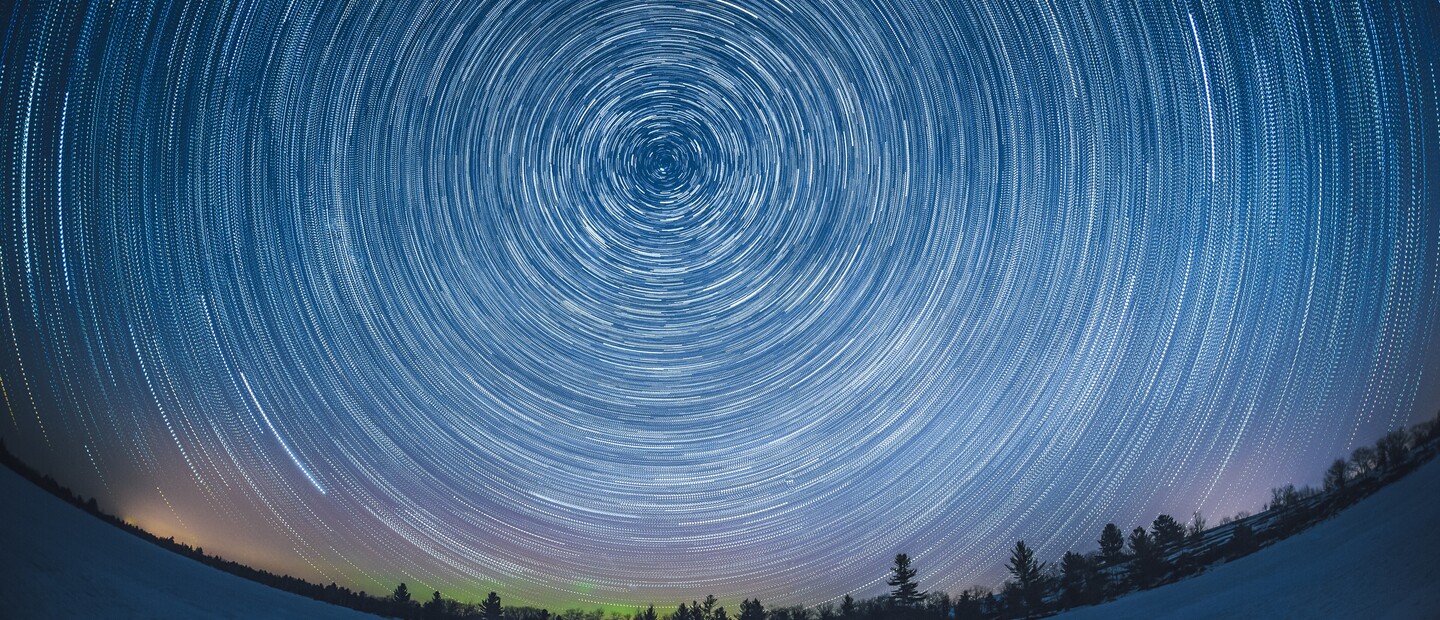
8 Can’t-Miss Stargazing Events in Ontario for 2025
There’s something undeniably magical about looking up into a star-filled night sky. From mesmerizing meteor showers to exciting solstice celebrations and a spellbinding lunar eclipse, 2025 promises to be a fantastic year for experiencing Ontario stargazing and spectacular night skies.
Whether you’re a seasoned stargazer or novice night sky enthusiast, the province’s diverse landscapes offer unparalleled views of the cosmos. Ontario’s designated dark-sky parks, remote lakes and expansive coastlines create an ideal canvas for celestial appreciation. Imagine sitting by a glassy lake as falling stars trace across the water’s surface, doubling the beauty above. Far from the glow of city lights, you’ll see the night sky as it was meant to be enjoyed—dark, vast, and teeming with wonder.
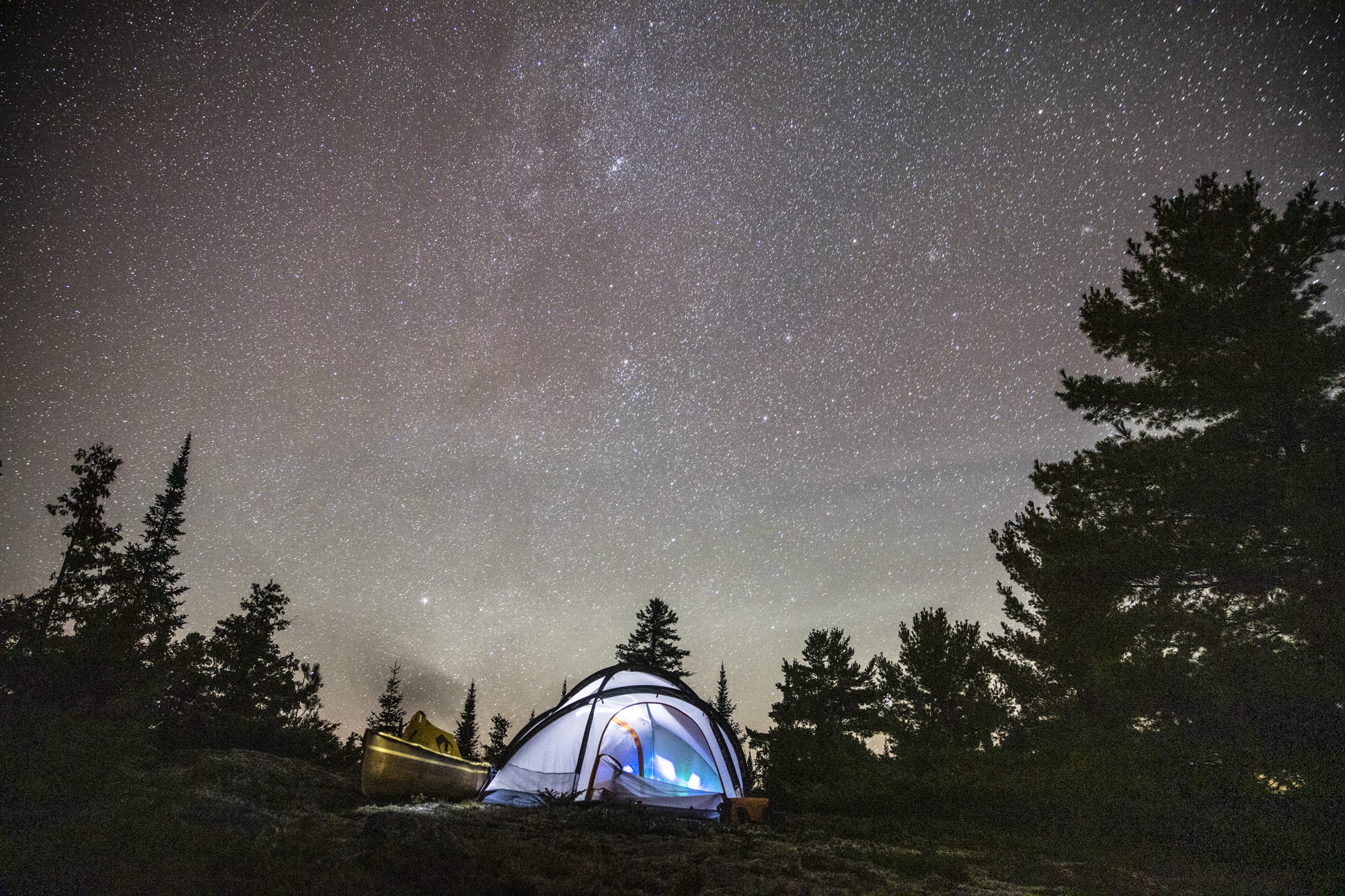
Top Stargazing Events in Ontario for 2025
In 2025, Ontario’s skies are set to host a spectacular array of celestial events, making it a memorable year for stargazers, night sky photographers and astronomy enthusiasts.
Quadrantids Meteor Shower
Date: January 2-3, 2025 (peak)
Best Viewing Locations: The clear, cold nights of northern Ontario make this a prime place to view short-lived winter events like the annual Quadrantids meteor shower. Plan a trip to experience the dark skies and deep solitude of Quetico Provincial Park—the latitude of this wilderness park means it’s also an excellent spot to catch northern lights.
Why Go: With more than 80 meteors streaking across the sky every hour, the first meteor shower of the year is a fiery, if fleeting, display of planetary pyrotechnics. The Quadrantids shower is known for its bright fireball meteors, created by larger particles. But unlike other meteor showers that tend to stay at their peak for about two days, the peak period of the Quadrantids only lasts a few hours.
- Rent a cozy cabin at Quetico’s Dawson Trail Campground to enjoy this wintery wonderland in comfort. Snow season activities include 15 km of groomed cross-country ski and snowshoe trails, ice fishing and skijoring.
- While you’re in northwestern Ontario, check out the David Thompson Astronomical Observatory at Fort William Historical Park in Thunder Bay. The observatory is home to one of the largest telescopes in central Canada that’s accessible to the public, and offers a variety of stargazing programs.
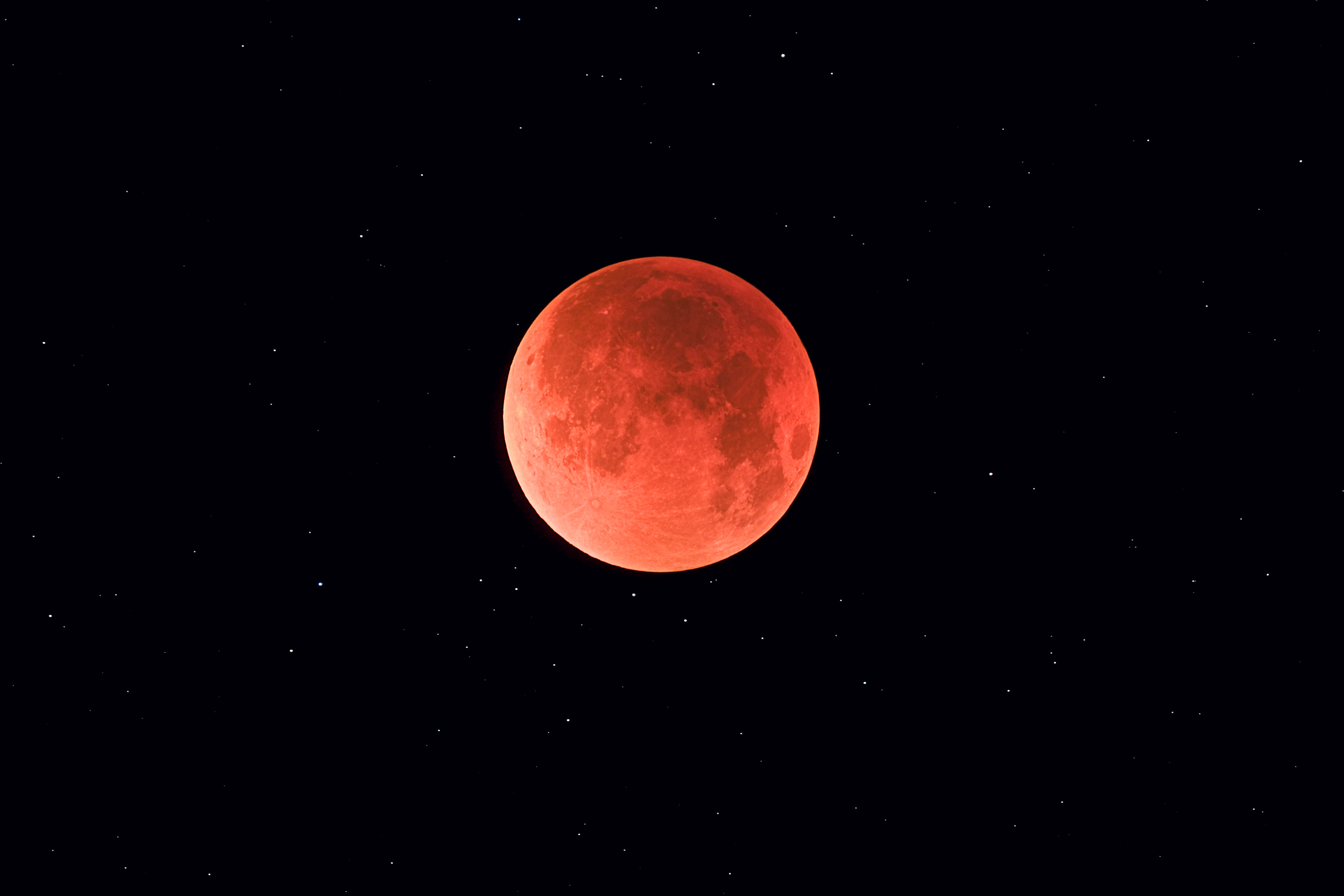
Total Lunar Eclipse
Date: March 14, 2025
Best Viewing Locations: While the lunar eclipse will be visible across Ontario, head to a dark-sky park like Torrance Barrens Dark Sky Preserve near Gravenhurst or Killarney Provincial Park for the most vivid views.
Why Go: This phenomenon is also known as a “Blood Moon” since the moon is slowly suffused with a brilliant red glow as it passes through the Earth’s shadow. The snowy March landscape promises to make this sight even more spectacular. With minimal light interference, Ontario’s dark-sky preserves offer ideal viewing conditions—but you’ll need to stay up late for this one, the maximum lunar eclipse occurs at 3 am.
- Just minutes from the 4,000-acre dark sky sanctuary at Torrance Barrens, stay at Muskoka Bay Resort with onsite dining, spa, and trails for fat biking, skiing and snowshoeing.
- Learn to capture stunning images of the night sky and moon on a guided astrophotography experience with Muskoka photographer, Wesley Liikane. Private lessons and night guiding are available on request.
- Killarney was the first Ontario provincial park to be awarded dark sky preserve designation and is one of only two parks with an observatory. Book a roofed accommodation in one of the park’s six cozy yurts or two cabins, and enjoy the eclipse from your deck.
Lyrids Meteor Shower
Date: April 21-22, 2025 (peak)
Best Viewing Locations: With wide-open views to the northeast over Georgian Bay, Bruce Peninsula National Park offers a front-row seat to the Lyrids meteor shower, one of the world’s oldest recorded meteor showers.
Why Go: The Lyrids are known for their fast and bright meteors, created by debris from the comet Thatcher. When you catch sight of these speedy fireballs, you’re witnessing a spectacle that’s been observed by people for at least 2,700 years, with the first recorded sightings dating back to China in 687 BCE. About a quarter of Lyrid meteors leave persistent trails of ionized gases that glow for a few seconds after the meteor has passed.
- Celebrate the arrival of spring by reserving a campsite at the park’s Cyprus Lake Campground and catching falling stars from your sleeping bag. When dawn creeps into the sky, I like to make the easy trek out to the coastal cliffs at the Grotto to catch sunrise.
- If you’re craving a more comfortable meteor experience, book a stargazing suite at Evergreen Forest Resort in nearby Wiarton. The round Woodland Suite has a clear roof for ultimate stargazing, and the Galaxy and Constellation Suites feature massive overhead skylights. Guests are also invited to join free Telescope Nights.
- Learn to capture stunning images of the night sky on a three-hour guided star and night photography workshop with outdoor adventure photographer Ariel Estulin.
Summer Solstice
Date: June 20, 2025
Best Viewing Locations: Head to Ontario’s beautiful Temagami canoe country to kick off summer and enjoy 16 hours of glorious daylight. Watch an after 9 pm sunset from the rocky shore of your campsite (or glampsite!), then wake early to catch the sunrise before 5:30 am the following morning. Temagami’s peaceful lakes, ancient forests and rich Indigenous heritage make this an ideal place to immerse yourself in the wonder of nature and welcome the abundance of summer. Alternatively, Canada’s capital hosts a 3-day solstice festival at Mādahòkì Farm in Ottawa.
Why Go: Since time immemorial, people in the northern hemisphere have celebrated Summer Solstice—the time in late June when Earth’s north pole reaches its maximum tilt toward the sun, creating the longest day and shortest night of the year. Heralding the arrival of summer, solstice continues to be an important event for Indigenous people across Canada.
- For a deluxe Temagami glamping experience, book a floating stargazer dome or A-frame on Lake Temagami with Chic Shore. Glamping stays include the use of a canoe and paddleboard for sunrise solstice sojourns.
- Temagami Outfitting Company offers scheduled and custom guided canoe trips for all ages and levels of outdoor enthusiasts. Equipment rentals, shuttles and partial outfitting also available.
- First Nation, Inuit and Métis cultures are represented in Ottawa’s three-day Summer Solstice Indigenous Festival, fusing the longest day of the year with National Indigenous Peoples Day. Past festival highlights include a glow-in-the-dark hoop dance, pow wow, and after-dark drone show portraying the teachings of the Seven Grandfathers.
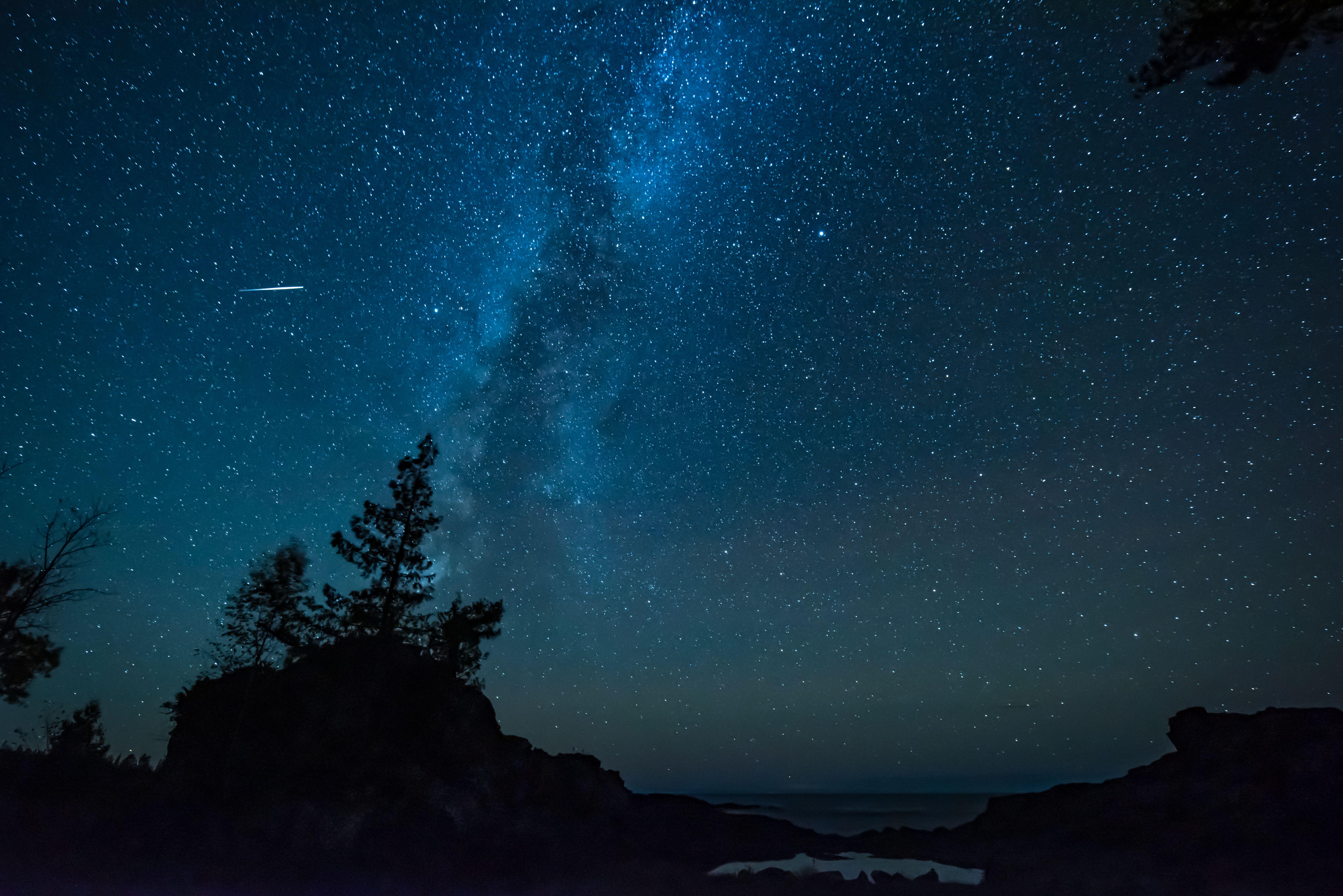
Perseids Meteor Shower
Date: August 11-12, 2025 (peak)
Best Viewing Locations: One of the year’s most popular celestial spectacles, the Perseids Meteor Shower takes centre stage at stargazing events across the province. In northern Ontario, head to Manitoulin Eco Park on Manitoulin Island, Killarney Provincial Park or Lake Superior Provincial Park. If you’re in southern Ontario, visit Point Pelee National Park. Bring a blanket and get comfortable—the Perseids meteors tend to become most numerous in the wee hours before dawn.
Why Go: Perseids meteors are plentiful, colourful and these shooting stars often leave persistent streaks of light across the sky—all of which makes this the most beloved meteor shower in the northern hemisphere. Every Perseid meteor is a tiny piece of the comet Swift-Tuttle, which swings by the Sun every 135 years. Under a dark sky, stargazers can expect 50-100 meteors per hour during the shower’s peak. Plus, mid-August is the perfect time in Ontario to sleep under the stars.
- The DarkSky Preserve at Manitoulin Eco Park is an open field offering 360-degree sky viewing. Guided astronomy events include popular Perseid Meteor Shower presentations and night hikes. Beyond the preserve, the park offers forest camping sites and rustic, earth-friendly accommodations.
- Killarney’s summer astronomy programs include guest astronomer nights and planet walks, as well as a special Perseids presentation. For all-night observation, reserve a campsite—the park’s George Lake Campground offers prime Perseids views of the northeastern sky.
- My absolute favourite way to experience this natural fireworks show is from a remote backcountry campsite. Lake Superior Provincial Park’s coastal campsites boast unobstructed views of the cosmos suspended above the world’s largest expanse of freshwater, and are accessible by paddle or from the park’s Coastal Hiking Trail.
- Ontario’s most southerly national park and dark sky preserve, Point Pelee offers remarkably inky night sky viewing over Lake Erie. Onsite telescopes and experts from the Royal Astronomical Society of Canada enhance your Perseids meteor experience.
Orionids Meteor Shower
Date: October 20-21, 2025 (peak)
Best Viewing Locations: Peaking in the third week of October, the Orionids meteor shower arrives during the height of fall colours in southern Ontario. Plan a getaway to Long Point Eco-Adventures at Turkey Point on Lake Erie to combine astral fireballs and the fiery fall foliage of the Carolinian forest.
Why Go: Radiating from just to the north of the constellation Orion, the Orionids meteor shower is framed by some of the brightest stars in the night sky, lending a spectacular backdrop for these showy meteors. Known for their brightness and speed, Orionid meteors travel at about 66 km/second into Earth’s atmosphere. They are created by debris from the famous comet Halley, which next appears in our sky in 2061.
- Join like-minded photography enthusiasts for the annual Fall Gales Photography Workshop at Rock Island Lodge in Wawa. Offering incredible opportunities for night sky photography over Lake Superior's stunning wilderness, you'll receive expert guidance and constructive feedback in a supportive, inspiring environment during this four-day event.
- Long Point Eco-Adventures’s Stargazing & Glamp package includes unique lodging in the resort’s luxury glamping suites or cozy pods, plus a guided observatory tour with lessons in astronomy and stories from mythology. The two-hour tour culminates in a view of the night sky through the dome’s 16-inch telescope. Stargazing isn’t the only activity at this unique family adventure resort—Long Point Eco-Adventures also has hiking and mountain biking trails, zip-line tours, guided mushroom walks, and more. There’s even an on-site restaurant and winery.
Leonids Meteor Shower
Date: November 17, 2025 (peak)
Best Viewing Locations: To make the most of the Leonids meteor shower’s low-key displays, head for an Ontario high point where you can enjoy unobstructed views of the eastern horizon. Pack your warm sleeping bag and plenty of layers for a hike-in or canoe camp-out in the Killarney backcountry, where Silver Peak promises panoramic 360-degree views over the La Cloche Mountains.
Why Go: While the Leonids meteor shower isn’t generally a showstopper, it is known for its Earth-grazer meteors—so named because they streak close to the horizon, producing long, colourful tails. The Leonids are best viewed in the eastern sky from after midnight until just before dawn. And if you’re a sky nerd like me, you’ll want to mark 2035 in your long-term planner; 10 years from now, the Leonids are set to produce a meteor “storm” with hundreds to thousands of meteors raining down each hour.
- Contact Killarney Outfitters for equipment rental and backcountry trip planning assistance.
- Not ready to rough it? For a full-service resort experience, make Killarney Mountain Lodge your home base and take the short hike out to Killarney East Lighthouse for prime Earth-grazer viewing.
Geminids Meteor Shower
Date: December 14, 2025 (peak)
Best Viewing Locations: The perfect, frosty counterpoint to August’s Perseids shower, I love bundling up to catch the Geminids display during the darkest season of the year. Since the shower peaks in the southern sky, I can’t think of a finer place to experience this stunning cosmic occurrence than Sleeping Giant Provincial Park—a spectacular landform resting at the tip of the Sibley Peninsula on Lake Superior’s north shore.
Why Go: Considered one of the best and most reliable meteor showers of the year, the Geminids offers the chance to see up to 120 meteors per hour. Radiating from the constellation Gemini, the display reaches its peak around 2 a.m., when the Twins are high overhead. In 2025, the meteor shower occurs close to a new moon, so the sky will be nice and dark for maximum meteor magic. If you’re lucky, you might be treated to aurora borealis as well.
For a dazzling winter night show, hike, fat bike or ski the park’s South Kabeyun Trail to a beautiful backcountry campsite overlooking Lake Superior and the 1,000-foot cliffs of the Sleeping Giant.
- Nestled on a picturesque inland lake, Sleeping Giant Provincial Park’s Marie Louise Lake Campground has five cozy housekeeping cabins available to rent year-round.
- Located just outside the park, Beyond the Giant Nature Retreats will treat you to wildlife-filled seclusion and comfortable log cabins with gorgeous lake views.
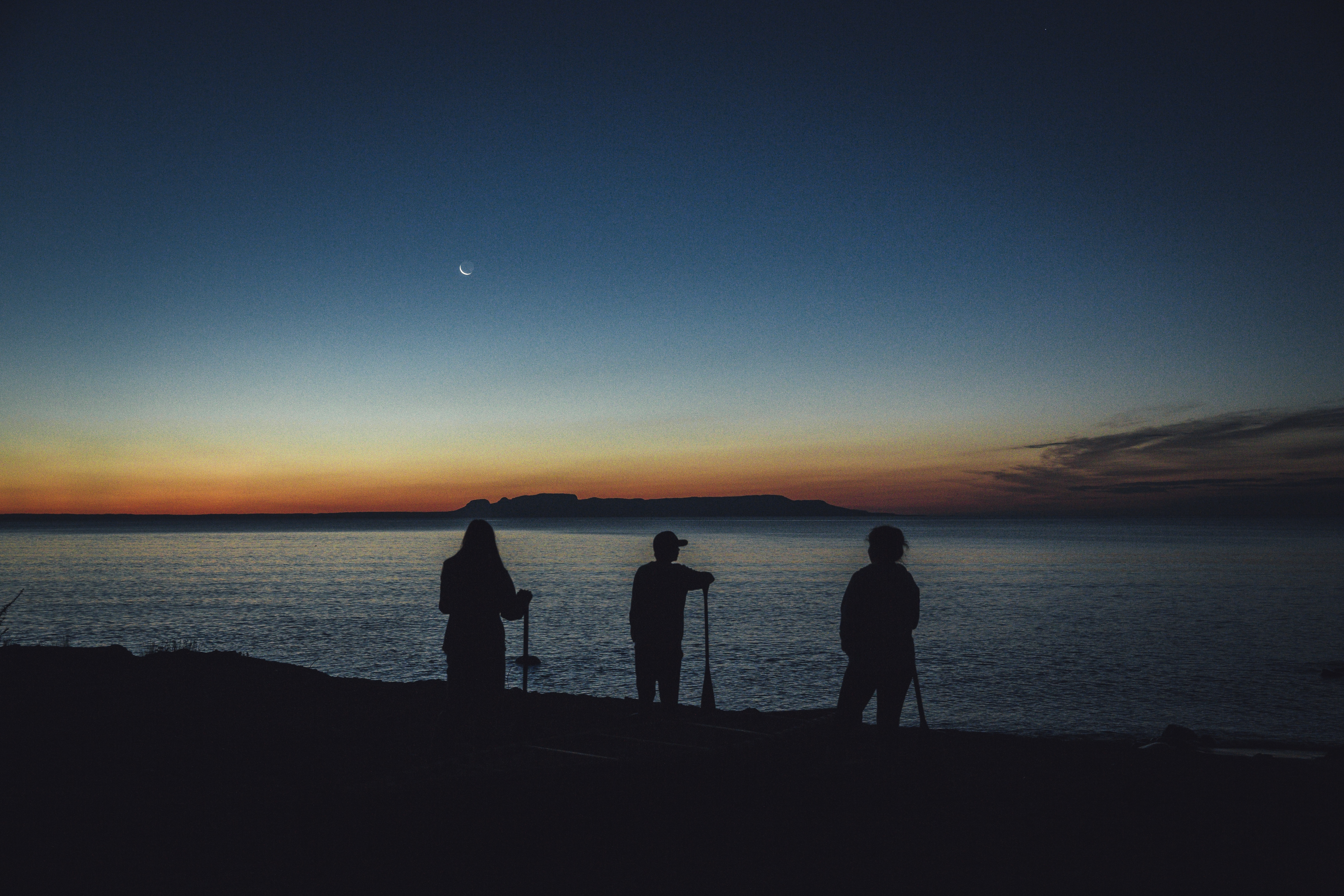
Best Places to Stargaze in Ontario
Quetico Provincial Park
For the ultimate stargazing solitude, head to Ontario’s northernmost International Dark Sky Park at Quetico Provincial Park. Hundreds of kilometres from any artificial light pollution, this wilderness park’s northern location gives visitors a good chance of catching the aurora borealis dancing across the night sky. World-class canoe tripping and year-round camping opportunities—along with comfortable roofed accommodations—make Quetico a night sky destination for all seasons.
Torrance Barrens Dark Sky Preserve
Nestled in the heart of Muskoka, the Torrance Barrens conservation reserve protects over 4,000 acres of crown land, ensuring this unique spot remains well protected from urban light. The ridges of granite bedrock provide unobstructed night sky viewing opportunities. New for 2024, Ontario Parks developed six official backcountry campsites for enjoying the barrens after dark.
Bruce Peninsula National Park
Famous for its spectacular escarpment views of Georgian Bay and crystal clear waters, Bruce Peninsula National Park is equally astounding after dark. There are two designated dark sky observation areas: one at the park’s Cyprus Lake Campground and trailhead, and the second at Singing Sands, a secluded coastal site southwest of Highway 6. Be sure to make camping reservations well in advance at this popular park.
Bonus: neighbouring Fathom Five National Marine Park—best known for boating trips to view shipwrecks and the unique sea stacks at Flowerpot Island—is also a designated dark sky preserve.
Killarney Provincial Park
The first Ontario Park to be awarded dark sky preserve designation, Killarney hosts dark sky events, interpreter-led astronomy programs and is home to a research-grade observatory with a 16-inch telescope. The stunning white quartzite ridges of the La Cloche Mountains, along with a smooth pink granite coastline on Georgian Bay, offer prime night sky viewing from the park’s beautiful backcountry campsites. There’s also year-round car camping and roofed accommodation in cozy yurts or cabins.
Manitoulin Eco Park
Manitoulin Eco Park was Canada's first Royal Astronomical Society designated commercial Dark Sky Preserve and continues to provide exceptional stargazing on Manitoulin Island. This off-grid venue has an open field that allows for 360-degree viewing, and it’s open spring through fall for camping, bunkie and tipi accommodations. Check for upcoming astronomy events and presentations.
Lake Superior Provincial Park
Perched on the shores of the world’s largest freshwater lake, far from urban light pollution, Lake Superior Provincial Park’s remote location makes it one of the darkest Dark Sky Preserves anywhere in the world. The designated observation site at Agawa Bay Campground, near the Visitors Centre, enjoys a magnificent skyscape over the lake. During summer, catch dark sky programming and events, and explore the park’s exceptional hiking trails, beaches and waterfalls.
Tips for an Unforgettable Stargazing Experience
To make the most of Ontario’s spectacular night skies, keep these tips in mind:
- Plan Around New Moons – Lunar phases have a big impact on visibility. For optimal stargazing, choose dates around the new moon for darker skies.
- Dress for the Elements – Ontario’s nights can be chilly, especially during early spring, late fall, and winter events. Pack warm clothing, blankets, and a thermos for a comfortable experience.
- Use a Star Map or App – Knowing what you’re looking at can deepen your appreciation. Apps like Star Chart or Star Walk can help you identify constellations, planets, and upcoming events.
- Leave No Trace – When exploring dark sky preserves and remote areas, follow low-impact principles to protect these precious ecosystems.
Plan Your Stargazing Adventure in Ontario
Ontario’s night skies offer a reminder of the world beyond our daily routines, an endless expanse of stars, galaxies, and mysteries. In 2025, make it a goal to experience the thrill of the province’s dark skies. Be sure to check local operators for guided stargazing experiences and up-to-date event information. Whether you’re witnessing a rare eclipse, counting meteors by a quiet lake, or simply enjoying the serenity of a starry night, the experience will stay with you long after the stars fade into dawn.
Recommended Articles

Hike The Best Trails

Rise and Glide
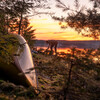
Fall Outdoor Adventures in Ontario

Ontario Trail Races
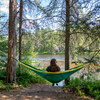
Windy Lake: Your Travel Guide
Explore Underground: Ontario Caves
11 Best Places to Go Rock Climbing

Need to Escape?

Winter Camping in Northern Ontario
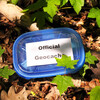
Ontario: the Geocaching Capital of Canada
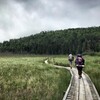
Hike the Pukaskwa Coastal Trail
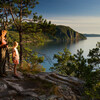
Your Outdoor Adventure Vacation Starts Here

Want a Leisurely ride?
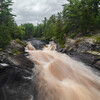
Hidden Gem: Chutes Provincial Park
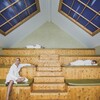
Explore and Relax: Ontario Spas for Outdoor Lovers
Hike the Lake Superior Coastal Trail

Outdoor Playgrounds
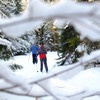
Best Weekend Escapes
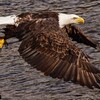
Want to take a pic like this?

